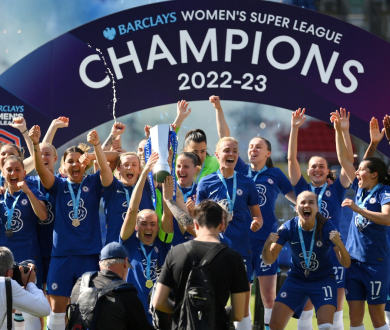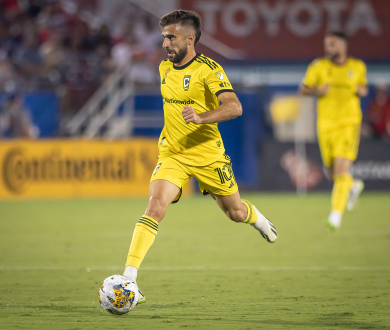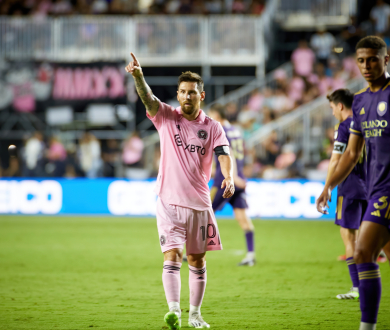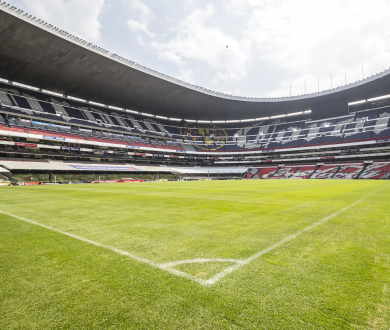
How MLS Clubs Can Solidify Their Path to Profitability
The MLS in many ways is the “Younger Brother” of the Major 5 US sports leagues group of siblings. For starters, it’s the youngest, having only been in existence since 1996. Also, it very much represents the “Gen Z” sibling of the group. Its innovative recent agreement with Apple TV to broadcast the league’s games for $2.5B over the next 10 years represented the first fully OTT streaming play amongst the Major 5 leagues.
Having said that, the MLS has done a lot of growing up recently. In the last 10 years, including last month’s announcement of a San Diego-based club, the league has added 12 new teams to bring its grand total to 30 (on par with the NBA and the MLB). The revenue ticket attached to the Apple TV deal represented a maturation of sorts, achieving a 285% increase from their prior agreement. It recently added to its roster of players arguably the greatest to ever play the game in Lionel Messi, beating out other enticing foreign offers.
And yet with all this positive growth recently, there still remains some serious questions about the MLS and its future. Namely, around the financial viability of its teams’ business models: we estimate that only 4 of the current 29 MLS teams are profitable / cash flow positive.
From the current income base for an average MLS team, two significant financial drivers will now most likely cease to grow for the foreseeable future: the Apple TV deal is locked in for the next 10 years while the MLS has stated that there are currently no future plans for further expansion teams and thus, no promise of the fees these new franchises pay the league (which redistributes them to the existing group of clubs). Furthermore, the Apple TV agreement might represent a much lighter lift for team revenues than advertised given that it’s possible the league, and subsequently the teams, could be responsible for fronting the production costs of the enterprise.
With that in mind, coupled with the assumption that a stark majority of MLS teams are currently not ‘in the black’, it is unclear what the path to profitability looks like for any given MLS club. These organizations most likely have been, and will continue to ask themselves: what are the levers available for our club to become financially sustainable?
While there are certainly business-focused areas that can and should be explored, such as ticketing, marketing, and sponsorships strategies, in this piece we will dive into a sporting revenue line item unique to professional soccer teams: player trading. Given the real dollar amounts exchanged when acquiring or transferring players, global soccer teams can tap into this as a potentially sustainable financial solution for their organization.
Here at Sportsology Group, we too have been contemplating the issue of MLS clubs’ path to profitability over the next 5 to 10 years. With the input and assistance of multiple MLS and European Football owners, front office executives, and coaches, we have outlined the following five sets of sporting strategies and models an MLS team can employ to both drive higher revenues and/or lower costs.
Model #1: Buy Low, Sell High
The general strategy used in this framework is relatively simple to understand: acquire undervalued players (either from smaller, relatively unknown leagues or younger players who have unproven potential) and then sell them at a price higher than you purchased them. Borussia Dortmund is probably the most famous global example. Ousmane Dembele (Bought in 2016 for €35M and sold in 2017 for €140M), Jadon Sancho (Bought in 2017 for €21M and sold in 2021 for €85M), and Erling Haaland (Bought in 2020 for €20M and sold in 2022 for €60M) are some of their recent notable examples of this strategy. While there are several other European clubs which use this model (Benfica, Porto, Lille, RB Leipzig, Brentford, Brighton, etc.) it’s not a strategy necessarily reserved for Europe.
Even though any global club could look to follow this model, it is a relatively unproven strategy in the MLS. Not as many clubs have developed over time track records like that of the aforementioned European teams. Having said that, there are a few examples of MLS teams finding success in this model. In 2017, Atlanta United signed Miguel Almiron for $9M then sold him in 2019 for $27M. In 2021, the Chicago Fire signed Jhon Durán for $2M and later sold him in 2023 for a fee that started at $18M and can rise to $22M if certain incentives are met.
Although finding undervalued and/or relatively unknown players to become integral parts of MLS rosters or eventually transferred to other leagues isn’t necessarily a novel concept, having this be a viable financial strategy the club can sustain itself on is undemonstrated within this league. Although it’s one of the most intuitive / logical models we’ll cover here, it can be incredibly challenging and requires a notable amount of patience to be successful with. The European clubs referenced above have built-up over many years proprietary and unique scouting systems and/or data & analytics functions which are able to more objectively and efficiently locate and identify talent across the globe.
Furthermore, even when successful, there is no guarantee this blueprint will work in perpetuity. All it takes is a few high-profile acquisition targets or transfer windows to not pan out or reap the desired benefits for this to severely damage the club. If a team is dependent on transfer profits to maintain its sporting level, once those profits are jeopardized, the club in turn could become hamstrung in their ability to move forward with success. Southampton are a great example of this in the Premier League. After years of success by employing this strategy, with a combination of youth academy production, their inability to maintain this streak of hitting on the right players led to both a downturn in results (new players not able to perform at the same level) and finances (new players not panning out and thus not being worth as much when being sold). This failure to continually acquire impactful talent was a major contributing factor to their relegation to the Championship this past season.
Although MLS clubs don’t have the same threat of relegation to their franchises as other global leagues do, failing in this way could bring about serious financial consequences for a club that has planned to be reliant on it for profitability. So, while this is an enticing model, it is both difficult to implement and dependent upon continually sustained success in player trading.
Model #2: Academy Product Sales
Essentially this strategy goes as follows: develop young players through your academy / development system, then after most likely having them play for your first team, sell them to another team (in the case of an MLS team, this has historically meant selling them abroad) for a nice return on investment. Given that acquisition costs for homegrown players are practically zero, this is a very attractive model to pursue under the right circumstances. Moreover, not only would there be no acquisition costs (which isn’t to say there aren’t any costs) but also, given MLS Homegrown Rules, players under this designation actually do not count against the team’s salary cap. Thus, even before one considers the possible revenue windfalls of selling a homegrown player, they already provide other financial advantages.
Nonetheless, the real impact for a team’s “path to profitability” from this approach lies in the profits generated from trading these academy-produced players. This is arguably the most established of the models currently in the MLS. Teams like the Philadelphia Union, FC Dallas and New York Red Bulls are the most obvious examples of utilizing this strategy. Since 2020, Dallas and Philly have generated $30M+ and $20M+ respectively in transfer proceeds from selling just 3-4 of their academy-produced players. Given NYRB’s connection to the Red Bull network, they too have made several multi-million dollar transfers to their affiliate clubs and other European powerhouses.
Yet, as with the previous model, executing on this particular strategy is not a simple nor easy undertaking.
Besides the issues with getting the right academy processes, people and structure correct, and operating at an optimal level, there’s a pretty big elephant in the room: talent is not distributed equally across this country.
Based on population size, the number of youth soccer participants, and general demographics, markets such as NY/NJ, Los Angeles and Miami will be naturally stronger producers of talent than a Cincinnati, Minneapolis or Portland. On top of this, the MLS has instituted ‘Homegrown Territories’ which essentially limit teams to their immediate geographical territories. Historically, MLS teams had access to the talent which resided within the 50-75 miles surrounding their stadium. Some exceptions have been made for teams, like RSL who were given special access to certain California geographies. Regardless of the size of the actual given territory, for teams who might be limited to their somewhat talent-light region and don’t have a special exception, this has meant receiving meaningful production from their academy has become nearly impossible and certainly not reliable.
Therefore, there are several teams where investing heavily in the academy in the attempt to re-create this strategy would not be advisable given the probable lack of ROI that it would bring.
Model #3: Academy / Youth Player Acquisitions
By combining ‘Buy Low, Sell High’ and ‘Academy Product Sales’ you get this framework: purchasing other MLS teams’ homegrown players and/or young foreign talent for a low price and then integrating them into roster construction and planning (including the 2nd team). Although this is a mix of the two previous models, its relative newness to the MLS and its particular advantages warrant highlighting it individually.
For teams who decide that their homegrown territory will most likely not be able to produce the level of talent required to rely upon it as a serious financial lever, this strategy can prove to be fortuitous. FC Cincinnati, Sporting Kansas City and Columbus Crew have all notably in recent years acquired players from other teams’ more talent-rich territories such as Los Angeles, Washington D.C. and New York City. These players have immediately been plugged into the teams’ first team rosters or near-term roster plans (John Pulskamp in SKC, Stiven Jimenez in FCC, and Will Sands in Columbus). Furthermore, a stark majority of these transactions have consistently been accomplished at a very low purchase price: $50K in allocation money (with varied incentives usually agreed upon as well).
These players can be recruited from both another MLS team’s academy system, or under the right circumstances, simply from another team’s designated territory. On top of that, when these players are acquired, the same homegrown player designation applies to their new team and brings about the salary cap benefits we discussed in the previous model. Although this trading market is relatively immature compared to the others, and thus there have not been any notable sales of these acquired youth products, the same concept is still possible: low acquisition cost, higher sale price.
Additionally, for teams whose homegrown territories are not as fruitful, the ability to invest in an 18-20 year-old international player with potential (either for a sale or succession planning) can be more cost-effective than spending significant amounts of capital in the development of a disadvantaged player pool. These players could also be easily placed into an MLS NEXT Pro team, to develop, learn the culture and language, familiarize themselves with the team’s style of play, etc.
The complication with this model lies in the difficulty in consistently and successfully being able to recruit top youth talent across this country and internationally. The academy talent market both within the US and internationally is massive, and scouting across this landscape can prove both costly and confusing. Data will be much harder, if not impossible, to source making it in some cases easier to identify a senior player in the 2nd division of Belgium than a youth player within the same state. To successfully employ this strategy in the hope of reaching profitability, resources would most likely have to be pulled back from other parts of the scouting department or elsewhere within the organization.
Model #4: Foreign Club Acquisition, Minimize Other Development Spend
While the previous models mainly entail changes to internal club transfer and roster construction strategies, this one enters a new realm of sorts: aiming to solve profitability by purchasing a controlling stake in a foreign club.
Multi-Club Organizations (MCOs) have risen in popularity in the last few years. Although massive brands such as City Football Group and Red Bull are most likely well known to this audience, new ones are seemingly popping up every day. We calculate that 106 MCOs exist today globally. The basic theory for MCOs goes as follows: acquire multiple clubs across various geographies to achieve synergies (costs and operational), gain market-specific knowledge and insights, and develop a robust multi-club talent pipeline. The pillars of every MCO strategy come down to diversification and/or scale. The specific targeted approach, structure and ultimate outcome will come down to the incentives. These can range from pure portfolio diversification plays to a fully integrated portfolio of clubs that operate as a single organization leveraging cross-platform synergies.
Currently we estimate that 12 MLS clubs have shared ownership with a foreign club, while 5 of them are part of a more formal conglomerate (NYCFC, LA Galaxy, NYRB, Colorado Rapids and RSL). Although NYCFC with CFG and NYRB with Red Bull Group have well-documented examples of these synergies and talent pipelines, the Rapids and RSL also have several instances of transfers within their sister clubs and markets (Kroenke Sports & Entertainment and Globalon Football Holdings respectively).
Although the theory is definitely appealing, and could even bring about further commercial benefits, it is a costly option to employ. The costs and efforts required to 1) identify the right club to acquire based on sporting needs 2) purchase a controlling stake in said club and 3) properly create and invest in the structure to manage multiple clubs cannot be considered insignificant. The reality is many MLS clubs simply do not have the resources or bandwidth to execute on this strategy in their current operating environment. Though a change to that status quo might make this strategy more feasible: considering the possibility of reducing local academy and 2nd team spend to the minimum amount. Before diving into this option, it’s best to level-set on the circumstances that could lead a team to make this tradeoff. If additional funds for club acquisition are not available to a given ownership / management team, and history has shown that the local talent pool will most likely not be able to provide the level of players required to make academy production a sustainable approach to employ, then this strategy is worth potentially considering.
While every MLS team is mandated to meet certain requirements of fielding an MLS NEXT Pro team and a number of academy teams, there is no requirement to invest heavily into these teams or anything past that minimum spend.
Based on our research, we estimate that an average MLS team spends about $3-3.5M annually on their academy and 2nd team combined, while the lowest spend on both is closer to $2M.
By reducing spend to the minimum, an average MLS team could save several millions of dollars annually. By accumulating and saving this over 2-3 years, a club could generate the appropriate funds to lodge an offer to purchase a controlling interest in a foreign club.
Although this purchasing power might only end up being between $5-10M, for the South / Central American and certain smaller European markets specifically, this would be considered a reasonable investment range for the acquisition of certain clubs. Countries such as Uruguay, Ecuador, Mexico, and Costa Rica are appealing for a potential MLS multi-club model for a variety of reasons: 1) proven production of youth talent 2) relative geographical proximity and 3) increased in-market talent insights. Furthermore, countries in Europe such as Belgium and Portugal sit at the attractive intersection of financially feasible investment opportunities and well-developed player trading pathways. Having said that, while these countries have all been highlighted for their potential sporting upsides, one must understand that there are several club-specific factors (infrastructure, cash flow, etc.) and geography-specific factors (political stability, economics risk, etc.) that obviously must also be considered when evaluating acquisition targets.
As the MLS has emerged as a budding market for young Central / South American and even European talent to jumpstart their journey of eventually playing in Europe’s top leagues, this strategy would become a natural extension of this trend. Coupled with the aforementioned cost and operational synergies (shared departments, technologies, reduced operational efforts, etc.), this strategy could be an intriguing model for clubs who struggle to develop their talent pipelines locally.
Though to reiterate, the type of investment, bandwidth, and patience to successfully execute on this plan is significant and should not be underestimated. Without dedicated personnel, it will become one of those long-term projects that is doomed to fail from the beginning because it wasn’t resourced properly. Without the correct in-market knowledge of these foreign markets, it can be difficult to feel confident in having the full picture of the investment opportunity and of any lesser-known pitfalls. And, if all of this has been done while reducing spend in your club’s local development system, the consequences to the future first team talent pipeline could be disastrous if this strategy is not successful. In summary, making an investment of this magnitude is not advisable if the right level of commitment to ensure it is managed properly is not in place.
Model #5: Foreign Club Partnership
The final model we’ll discuss here is very similar to the previous approach with one major caveat: there is no financial commitment or acquisition of another club, simply a strategic partnership. We believe currently there are 5 MLS teams who have formal partnerships with foreign clubs. Some of these are formed on a strategic alliance basis, such as LAFC and Bayern Munich (FC Dallas famously had a long-term partnership with the German Champions which provided several player trading opportunities). While others could be a consequence of shared Minority Owners across teams, such as Inter Miami with the Atletico Madrid group of clubs, RC Lens, and Millonarios FC.
Whereas this strategy does provide some of the player recruitment and identification benefits that the club acquisition model prioritizes, it does not afford the same level of synergies and comes with a notable lower level of control. This control is important: without having a clear ‘owner’ in between clubs, it is not possible to simply dictate which players go where and at what point of time. Without that ability, it can be much more difficult to control the talent development pipeline as these transfer occurrences might not be as reliable and thus more challenging to plan around. And even if you’re able to find some level of reliability, the lack of club control means you cannot dictate how the foreign club is run. This could entail different philosophies, strategies, and processes, which can all have serious negative impacts on player development.
Teams may or may not prioritize for example: playing youth players, aggressive fast-paced soccer, periodization of training sessions, etc. Checking yes or no to these types of boxes can actually have a serious impact on a player’s viability in the future for A) the parent club or B) the value of the player if they are to be sold.
Although usually these partnerships are formed with clubs where those items can be somewhat aligned, it still would represent a level of alignment below what could be achieved if the club was owned outright. What this model brings to the table is a much more cost-effective method to increase optionality and lower barriers of entry in player trading, but will not realize the same degree of synergies that an MCO model provides.
Conclusion
What hopefully has been apparent after reading this piece is that there is no one-size-fits-all for an MLS team’s path to profitability. And yet, that’s a pretty common occurrence in sports. Sports are filled of examples of teams with unique intricacies that dictate their sporting strategies:
Utah/Denver-based teams use their city’s elevation to provide conditioning and other competitive advantages over their opponents
The Houston Rockets used their G-League organization to test out game strategies instead of having the team focused solely on developing individual players
NYC/LA based franchises use their location to attract marquee free agents
Picking the right strategy for your organization should be a culmination of various factors, some of which will be the unique variables only your franchise and location provides.
Picking the right MLS roster construction model to prioritize profitability is no different.
An MLS executive management team should evaluate a variety of factors before deciding on what model they want to pursue: What is our current scouting department infrastructure and track-record? What is our local homegrown territory’s potential for sustainable talent production? What foreign markets do we have a strong/weak presence in?
Profitability will continue to be a core objective of MLS teams. Therefore, amongst the various business ops strategies that can be deployed, implementing and executing the right sporting strategy for your organization will be a crucial exercise to ensure your club can achieve that objective in the next 5 to 10 years.











